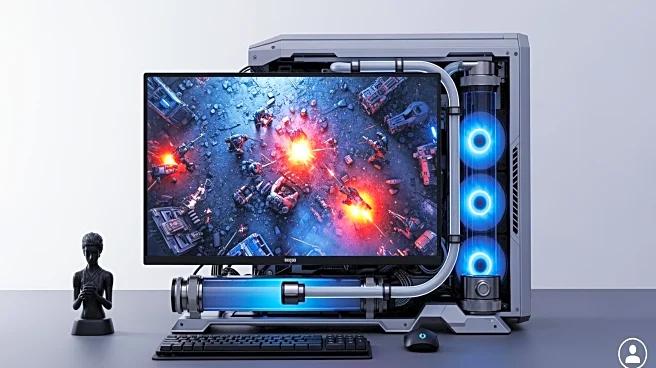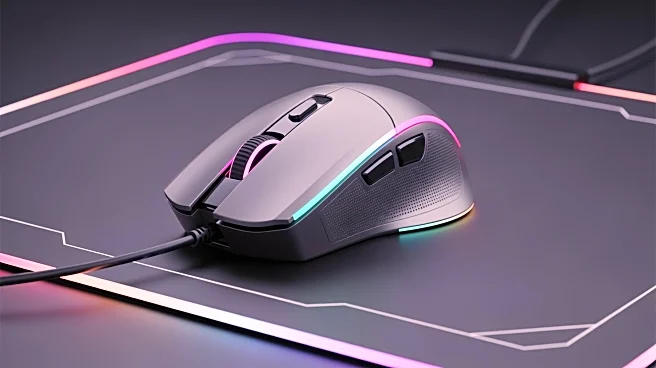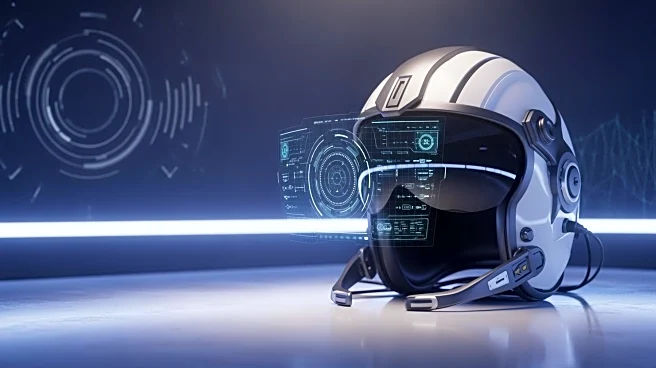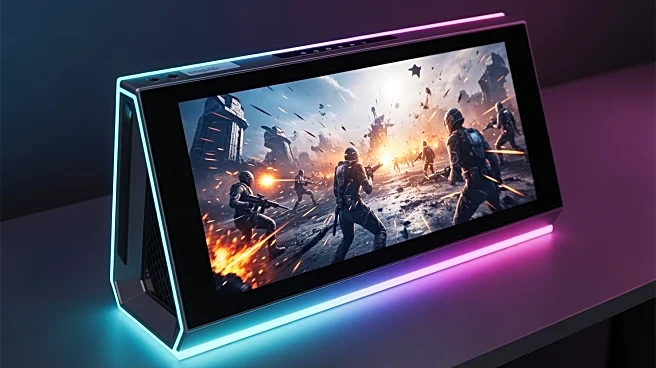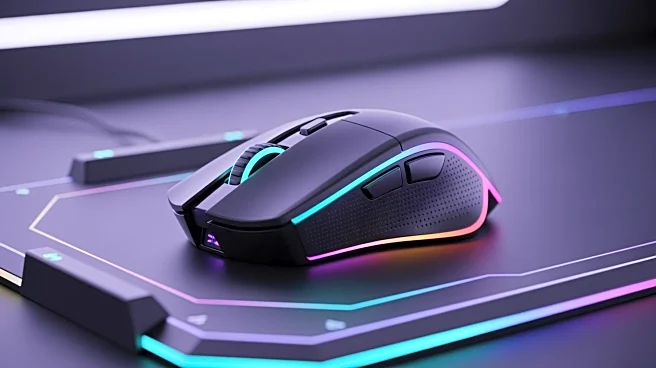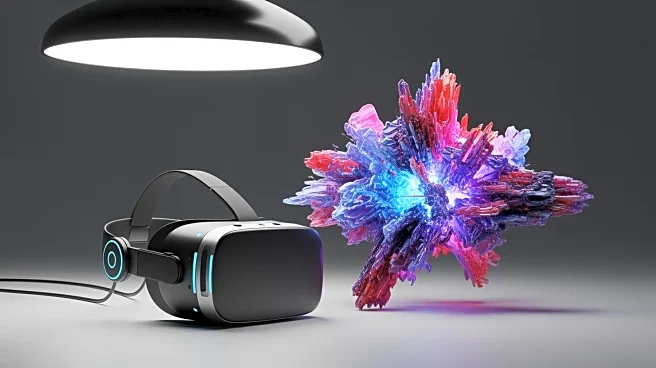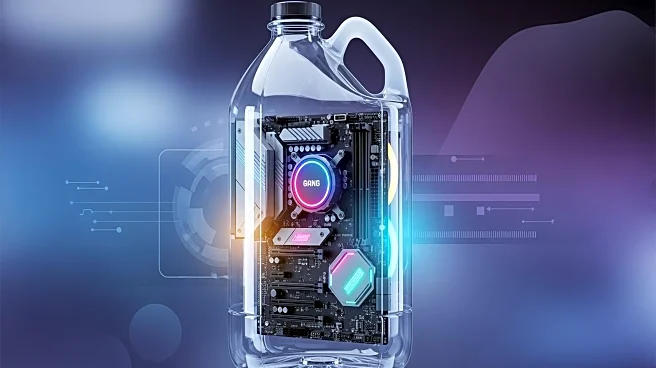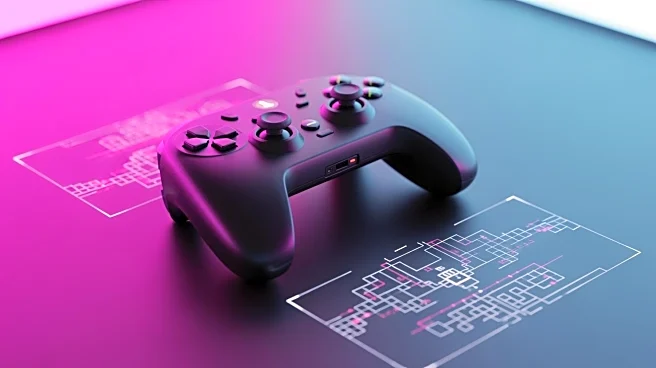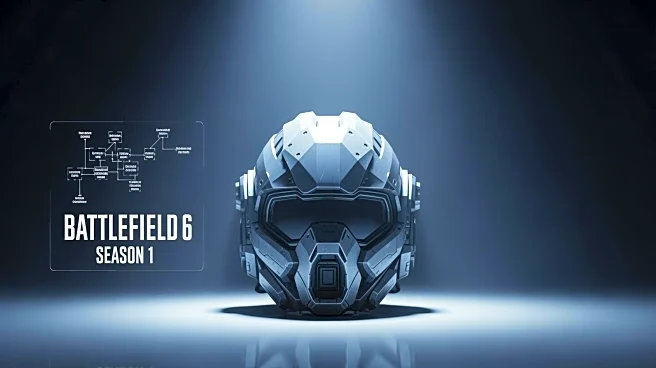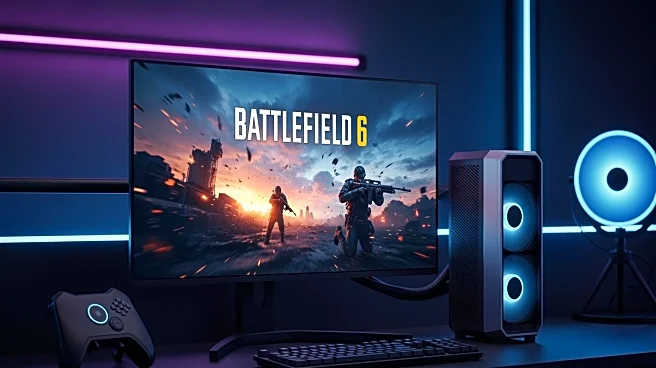What's Happening?
A Reddit user has taken an unconventional approach to gaming by playing Battlefield 6 on the screen of an MSI MPG CoreLiquid P13 360 AIO cooler. This cooler, typically used for CPU cooling, features a small screen that can be used as an extended display.
The user managed to run the game on this screen, although the display is not ideal for gaming due to its small size and the fact that part of the game's HUD is cut off. The setup includes an Intel Core i7 13700K and an Nvidia GeForce RTX 5090, which are high-performance components, making the use of such a small screen particularly humorous. This experiment highlights the trend of integrating screens into various PC components, often leading to creative but impractical uses.
Why It's Important?
This incident underscores the growing trend among hardware manufacturers to incorporate screens into a wide range of PC components, sometimes leading to novel but impractical applications. While the use of an AIO cooler screen for gaming is not practical, it reflects the broader industry trend of adding features to differentiate products in a competitive market. This trend can drive innovation but also raises questions about the utility and cost-effectiveness of such features. For consumers, it highlights the importance of evaluating the practical benefits of new hardware features versus their novelty.
What's Next?
As hardware manufacturers continue to explore new ways to integrate screens and other features into PC components, consumers can expect to see more creative uses and potential gimmicks. This could lead to further discussions about the balance between innovation and practicality in hardware design. Additionally, as more users experiment with these features, manufacturers may receive feedback that could influence future product designs, potentially leading to more practical applications of integrated screens.
Beyond the Headlines
The use of an AIO cooler screen for gaming, while amusing, also touches on the broader cultural phenomenon of tech enthusiasts pushing the boundaries of conventional use cases. This reflects a community-driven aspect of technology adoption, where users experiment and share their findings, contributing to a collective understanding of what is possible with current technology. It also highlights the playful side of tech culture, where humor and creativity play a significant role in how new technologies are perceived and utilized.
